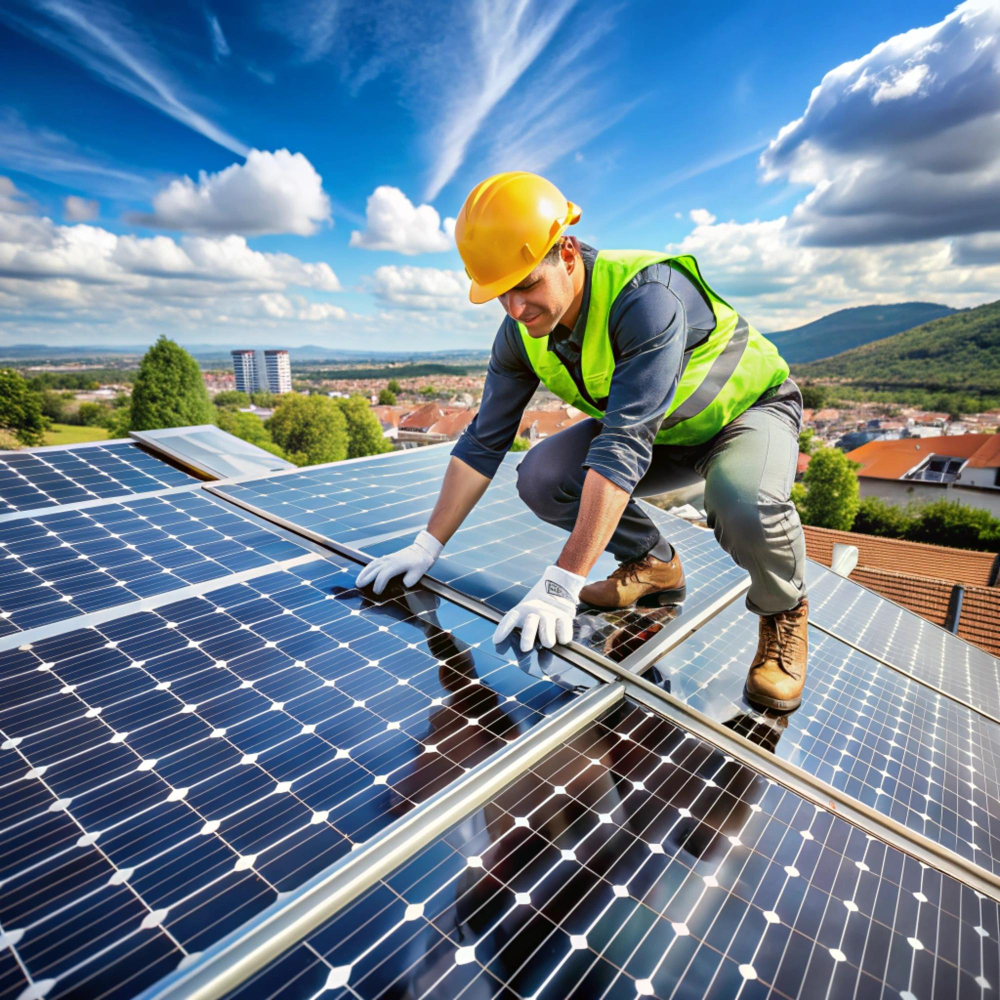Switching to solar energy is an exciting decision that not only benefits the environment but also significantly reduces your electricity bills. However, the process of installing solar panels on your home might seem daunting at first. To help ease any concerns, this blog will walk you through the entire solar panel installation process, step by step, so you know what to expect. With a clear understanding of each stage, you can confidently move forward with your solar energy journey.
1. Initial Assessment and Site Evaluation
The first step in the solar panel installation process is an initial assessment and site evaluation. A professional solar installer will visit your home to assess its suitability for solar panels. They’ll look at several factors, including:
- Roof condition: The installer will assess whether the roof is strong enough and can bear the weight of the solar panels.
- Roof orientation and tilt: tilted south-facing roofs with an angle of between 30 and 45 degrees are the most suitable for solar energy. The installer will also look at the direction that your roof is facing and the slope of the roof.
- Shade analysis: They will determine if any trees, buildings or any other structures will be shading your roof in a way that will affect the efficiency of the solar panels.
- Energy needs: You will talk about your current usage of energy, which defines the amount and size of the solar panels to be installed.
This assessment ensures that your home is a good fit for solar energy and provides the installer with the information needed to design a system tailored to your needs.
2. System Design and Permitting
After the site assessment, the solar installer will then develop a solar power system that will suit your home. This design will determine the number of panels to be installed, where they are to be installed on your roof, and what type of inverter is to be used. The objective is to get the most out of your energy generation in relation to the appearance and functionality of your house.
After finalizing the design, the installer will help you obtain the necessary permits and approvals from local authorities. This can include:
- Building permits: It guarantees that the installation complies with the laws and ordinances of the region where it is to be installed.
- Electrical permits: Ensures that the solar power system meets the set electrical safety standards.
- Homeowners Association (HOA) approval: In some cases, you will require permission from the community’s homeowners association (HOA) for the installation.
Although this stage may take some time, it is very important to avoid any risks and legal issues in the process of solar panel installation.
3. Ordering and Shipping of Equipment
With the permits in hand and the design finalized, the next step is to order the necessary equipment. Your solar installer will procure the solar panels, inverters, mounting hardware, and any other components required for the installation.
Depending on the manufacturer and the complexity of your system, the equipment may take a few weeks to arrive. During this waiting period, your installer will finalize the installation schedule and coordinate with you to ensure everything is ready for the big day.
4. Solar Panel Installation
The installation day is one of the most exciting parts of the process. Here’s what typically happens:
- Mounting the panels: The installation crew will start by attaching the mounting hardware to your roof. These mounts secure the solar panels in place and are installed with precision to ensure they withstand weather conditions.
- Installing the solar panels: Once the mounts are in place, the solar panels are securely attached. The crew will carefully position each panel to maximize sunlight exposure.
- Wiring the system: After the panels are installed, the crew will connect them to the inverter. The inverter is a critical component that converts the direct current (DC) electricity generated by the panels into alternating current (AC), which your home uses.
- Connecting to the electrical grid: If you’re opting for a grid-tied solar system, the final step is connecting your solar power system to the local utility grid. This allows you to draw power from the grid when your panels aren’t producing enough electricity and potentially sell excess energy back to the utility company.
The installation process usually takes one to three days, depending on the size and complexity of your system.
5. Inspection and Approval
Once the installation is done, a local government inspector will come to your home to check whether the solar power system meets the set legal requirements and safety measures. They will verify the quality of the installation, the condition of the electrical connections and the safety of the system.
After the inspector has given his or her stamp of approval, your utility company will also review it. They will connect a new meter that will enable the measurement of the electricity produced by your system and other preparations to enable the commencement of the generation of energy by the solar panels.
6. Activation and Monitoring
After passing all the inspections and getting all the necessary approvals, your solar power system is ready to go live. Your installer will switch on the system and your home will begin to produce clean, renewable energy from the sun.
To help you know that your system is working effectively, most installers offer monitoring tools. These tools enable you to monitor the amount of solar energy being produced in real-time and how much you are saving on your electricity bills.
7. Maintenance and Long-Term Care
Solar panels are low maintenance devices but it is recommended that one should monitor them to ensure that they are functioning optimally. Clean the panels often for any debris, dirt or snow that may have accumulated on the panels. Your installer may also suggest that you get the system checked by a professional at least once in a while to check for any signs of a problem.
If well maintained, your solar panels will serve you for 25 years or more, giving you clean energy and saving you money in the process.
Conclusion: Enjoying the Benefits of Solar Energy
Installing solar panels is a rewarding experience that offers both environmental and financial benefits. By following this step-by-step guide, you can navigate the solar panel installation process with confidence and ease. From the initial assessment to the final activation, each step is crucial in ensuring that your solar power system is safe, efficient, and tailored to your home’s needs.
As you begin to generate your electricity and reduce your reliance on the grid, you’ll enjoy lower energy bills, increased property value, and the satisfaction of contributing to a more sustainable future. Solar energy is not just an investment in your home; it’s an investment in a cleaner, greener world for generations to come.





